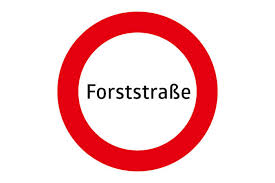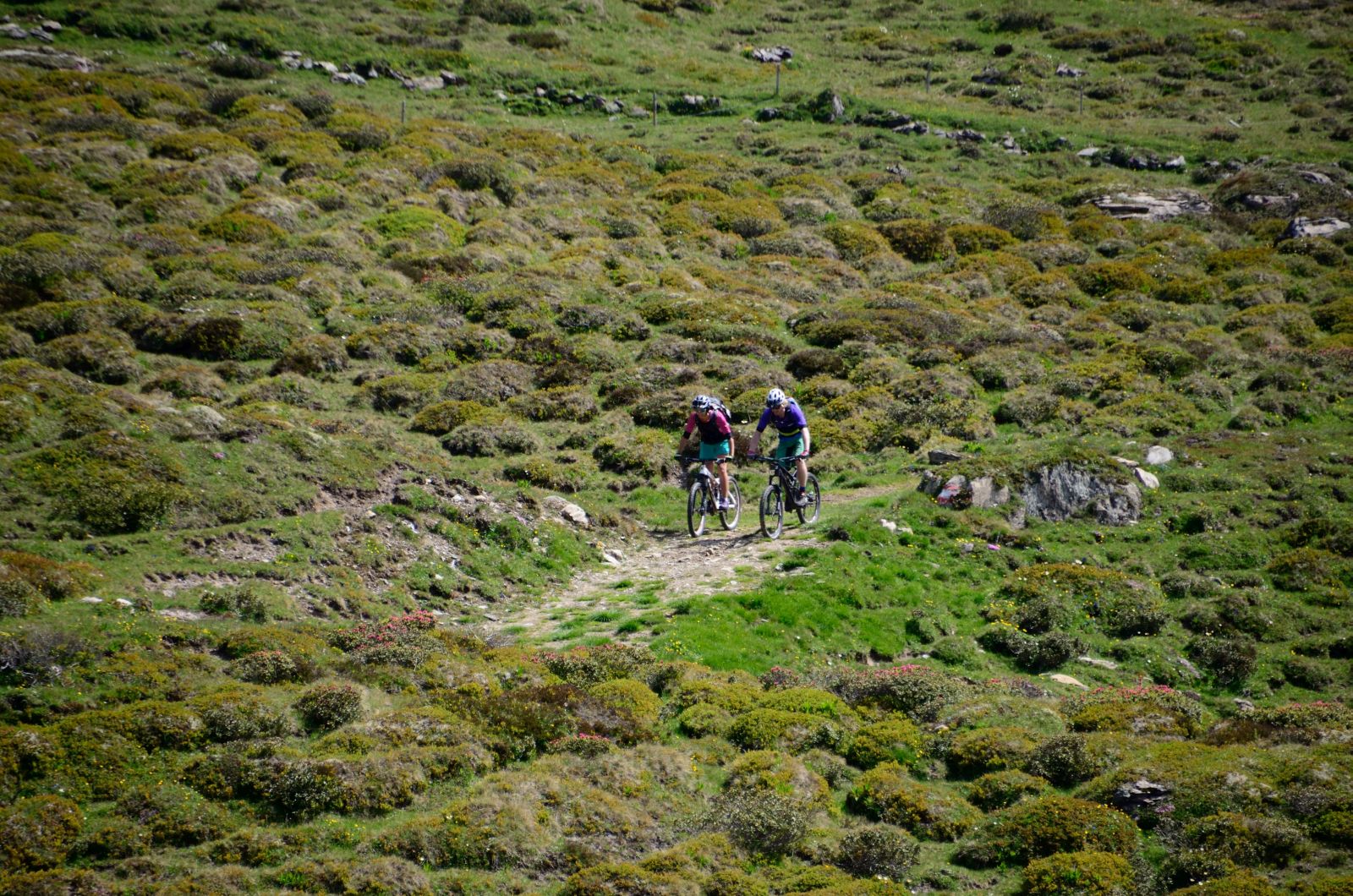1. Am I allowed to ride a mountain bike on a forest road with a sign prohibiting riding/driving?
Forest roads are legally part of the forest and do not necessarily need a designation. In the context of the Right to Enter the Forest (Forestry Act §33), anyone may enter the forest for recreational purposes and spend time there. Riding on a forest road, however, requires the express agreement of the landowner and/or road/path keeper. In practice it can be the case that both a notice prohibiting riding and also official MTB signs are posted at the start of the forest roads. One can normally assume that the forest road may be used by mountain bikers and the prohibition on riding does not apply.
2. Is mountain biking environmentally friendly?
Every form of use of the forest and the outdoors has an impact on nature. A disproportionally high impact on the natural world cannot be scientifically proven compared with other outdoor sports. From an ecological perspective there is also no justification for an urgent regulation of mountain biking. The ecologically negligible detrimental impact, which can also be scientifically proven, can be avoided in advance by well thought out planning measures. For mountain bikers, behaving considerately and only using designated trails are also, of course, a prerequisite and firm component of the Code of Conduct in the outdoors.
3. Is there a general right to free access to the outdoors?
In contrast to the commonly held opinion, there is no general right to free access to the outdoors. Spending time on a mountain meets with wide acceptance, as does mountain biking. Nonetheless, persons venturing into the outdoors are, as a rule, not the owner of the land where they are walking/riding. The use of another’s property can, however, be regulated in a variety of ways. The basis is civil law such as a contract, a usucapion or acceptance by the landowner or the publicly lawful counterpart to private easement , i.e. public use. This, however, requires a clear legal basis such as the Forestry Act §33 in which the right to enter a forest is clearly regulated. Riding mountain bikes in Tyrol can only be officially regulated via the civil law. This applies both to the forest as well as to alpine waste ground. The law varies from state to state, country to country. In the neighbouring state of Bavaria , for example, the basic right to enjoy the beauties of nature and outdoor recreation is guaranteed by the constitution and also includes biking. In Tyrol we are using the Tyrolean MTB Model to try to reconcile mountain bike access to the countryside with co-existence, with due regard to the legal basis.
4. Does mountain biking ruin the paths?
The main reasons for erosion damage to the paths are the high level of use, features of the ground favourable to erosion, path design and the influence of the weather. The latter makes the greatest contribution to causing considerable damage to paths. There have been relatively few scientific investigations differentiating the damage to paths on the basis of different user groups. What has been demonstrated is that mountain bikers, as other path users, play their part in eroding the paths. A higher proportion of the path erosion caused by human activity can , however, not be primarily attributed to mountain bikers. But this also depends on a defensive path-friendly riding style. Locked rear wheels and bend slides can have a significantly greater effect on the path. However, by adhering to the Code of Honour, that should become the exception rather than the rule.
5. What does this liability actually mean?
The matter of liability is dealt with in the Allgemeines Bürgerliches Gesetzbuch (ABGB) (General Civil Code). MTB trails and single trails are here defined as paths. Paths in the legal sense are any type of public thoroughfare. It makes no difference, therefore, whether the path has been artificially made or has been created over many years of use. The so-called holder of the path liability applies to paths. The holder of the path is that person who has a specific power of disposition over the path and can take measures to maintain the path. This means: someone is responsible for the path. Ownership on its own is not the decisive factor. The holder is liable for damage or injury arising from the inadequate state of the path, with the condition that there was grossly negligence and/or wilful culpability on the part of the holder of the path. The definition of "inadequate" is determined by the specific dedicated purpose of the path. Forest roads must, for example, fulfil the duty of ensuring road safety for pedestrians since these roads may legitimately be used by pedestrians. Should a path be used without authorisation and damage or injury occur because of the inadequate state of the path, the owner of the forest is not liable insofar as it is evident that the use was unauthorised. However, this has to be judged separately case by case.
6. ... and what part does the Province of Tyrol now play?
The Office of the Tyrolean Provincial Government, Section Forestry develops, coordinates and manages, in collaboration with its partners, the BERGWELT- TIROL MITEINANDER ERLEBEN programme. Its activities are mainly concerned with conceptual and planning measures in the area of outdoor sports, and awareness raising with regard to conflict reduction on a province level. Taking direct control of projects and implementation of options such as MTB trails, single trails and bike parks are issues that the Province of Tyrol does not undertake. Meaning that we are not actively involved in implementing projects relating to mountain biking. That is a matter for the communities, tourist boards and cable car companies. With the basic parameters of the MTB Model 2.0 we have tried, taking current legislation into account, to reconcile access to the outdoors by the general public with mountain bikes, respecting the needs of the outdoors and the interests of other affected interest groups. The Forestry Section at the Department of Rural Affairs advises project initiators and administers the official trails (agreement for the release, funding agreements, payments of financial grants, oversight of adherence to the basic parameters and much more). We try by means of persuasion state fundings to create attractive stimuli for the implementation of specific projects relating to mountain biking and in particular single trails and thereby also to achieve a desirable political objective in Tyrol.










